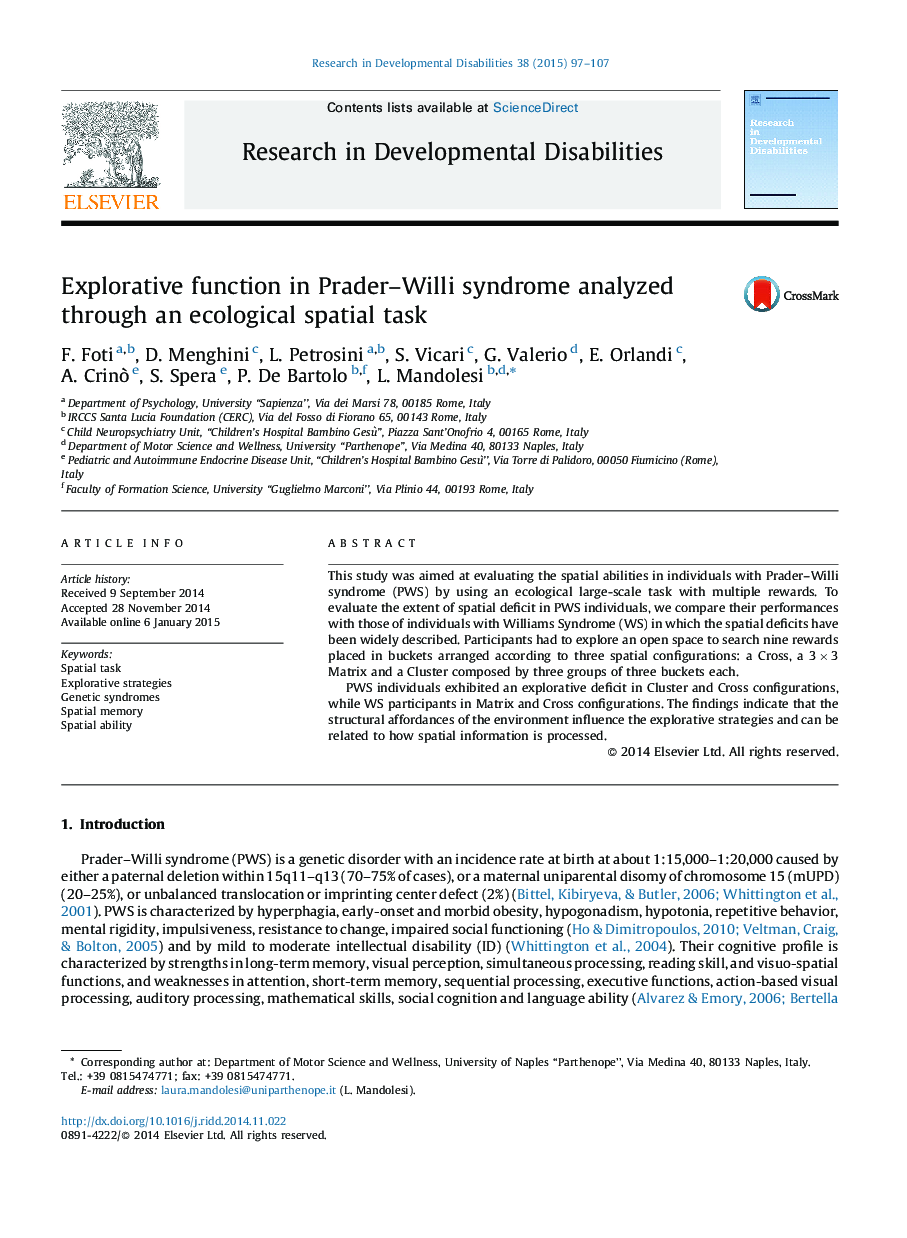| Article ID | Journal | Published Year | Pages | File Type |
|---|---|---|---|---|
| 371215 | Research in Developmental Disabilities | 2015 | 11 Pages |
•We evaluated the spatial abilities in PWS by using an ecological large-scale task.•We compared PWS spatial performances with those of individuals with WS.•Structural affordances of the environment influence the explorative strategies.•Structural affordances can be related to how spatial information is processed.
This study was aimed at evaluating the spatial abilities in individuals with Prader–Willi syndrome (PWS) by using an ecological large-scale task with multiple rewards. To evaluate the extent of spatial deficit in PWS individuals, we compare their performances with those of individuals with Williams Syndrome (WS) in which the spatial deficits have been widely described. Participants had to explore an open space to search nine rewards placed in buckets arranged according to three spatial configurations: a Cross, a 3 × 3 Matrix and a Cluster composed by three groups of three buckets each.PWS individuals exhibited an explorative deficit in Cluster and Cross configurations, while WS participants in Matrix and Cross configurations. The findings indicate that the structural affordances of the environment influence the explorative strategies and can be related to how spatial information is processed.
